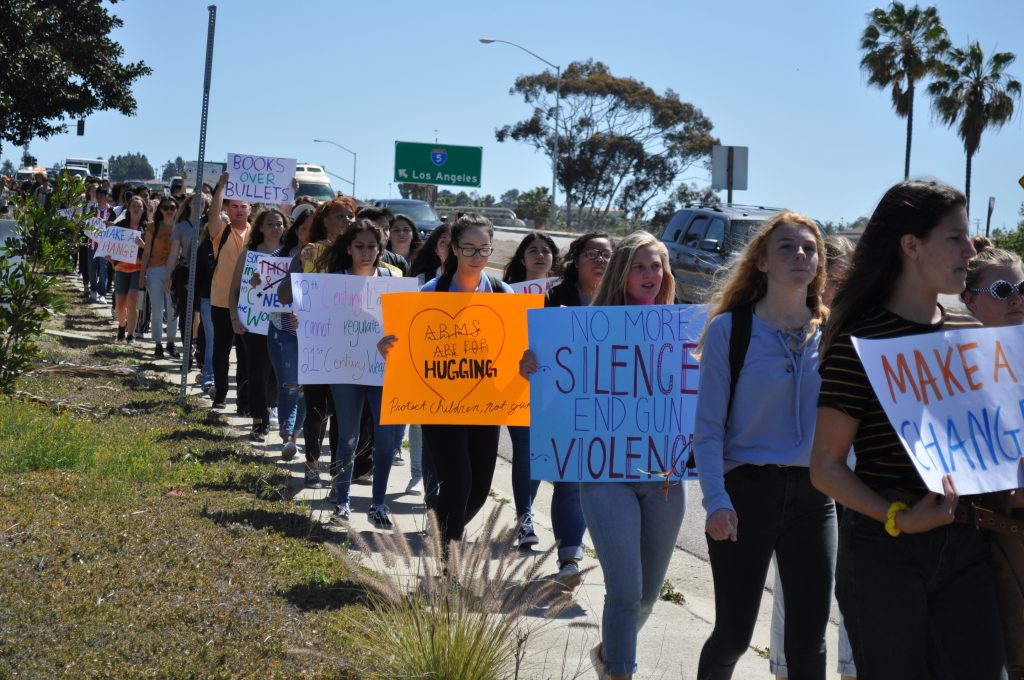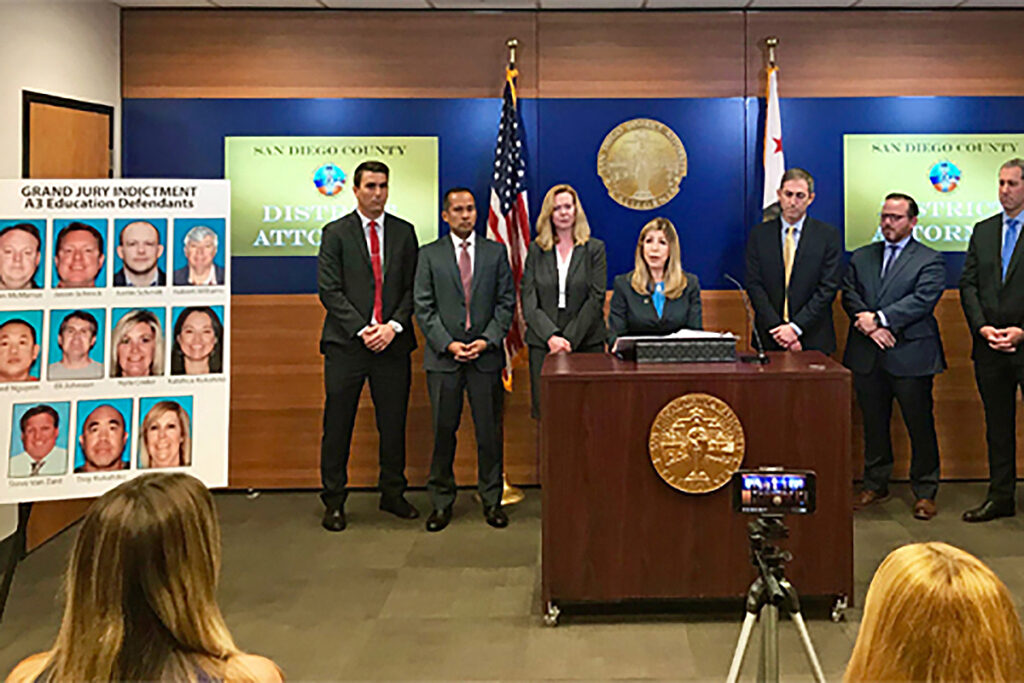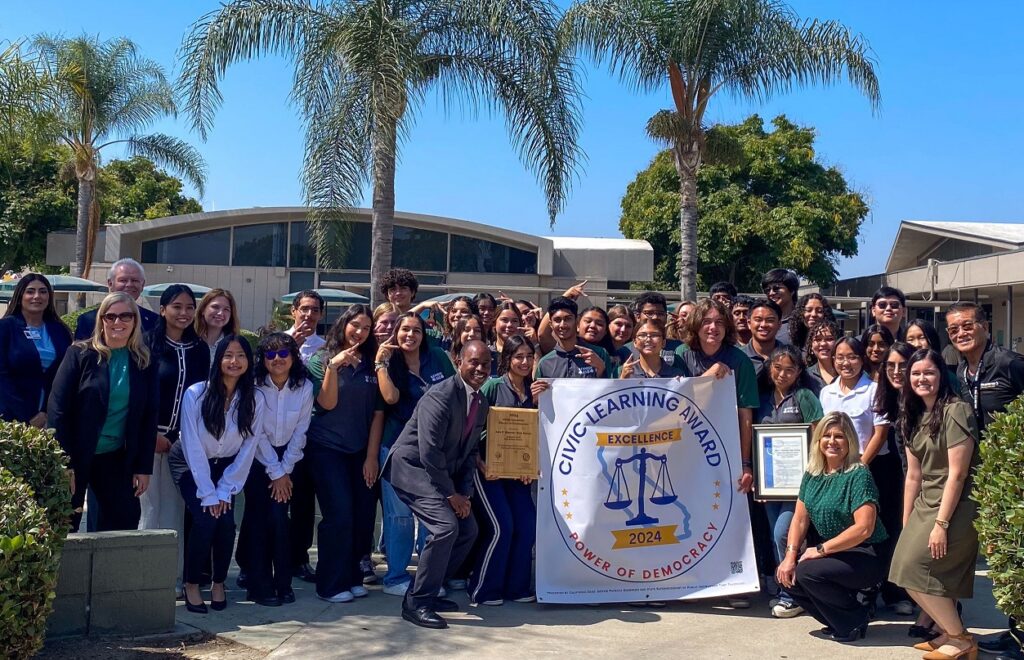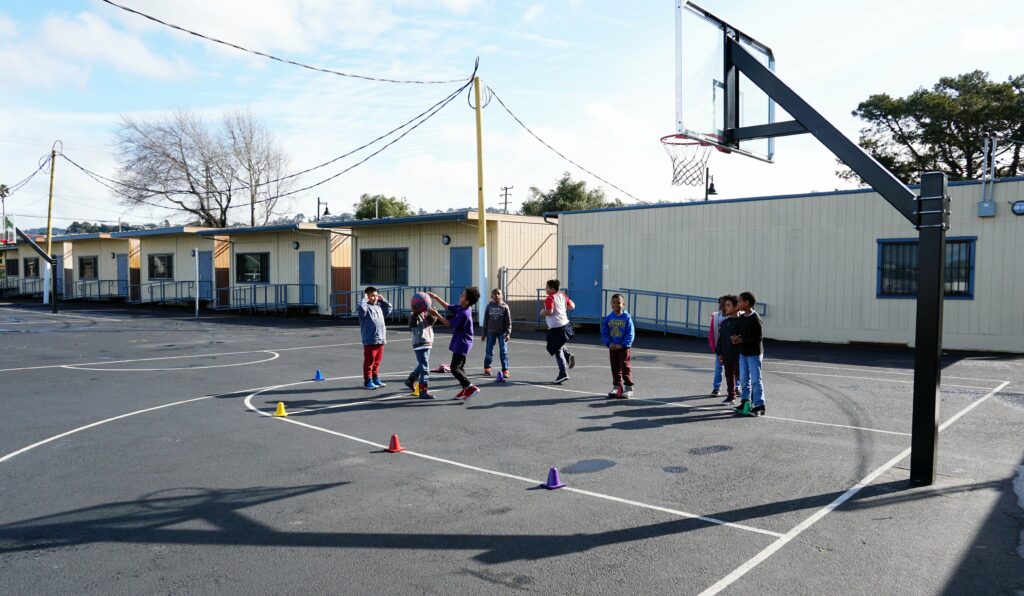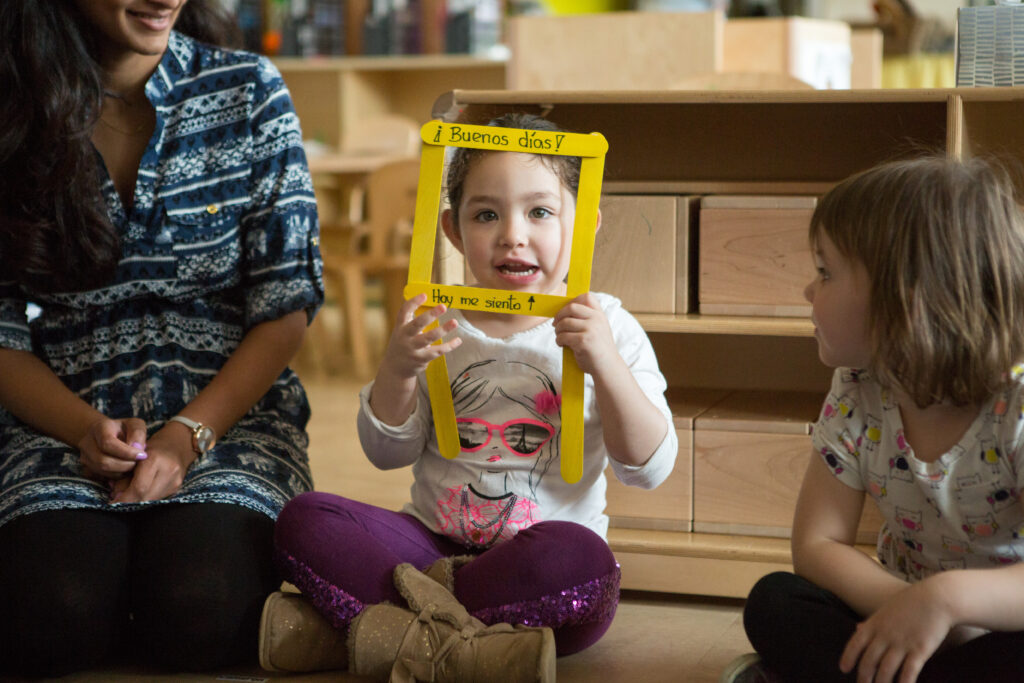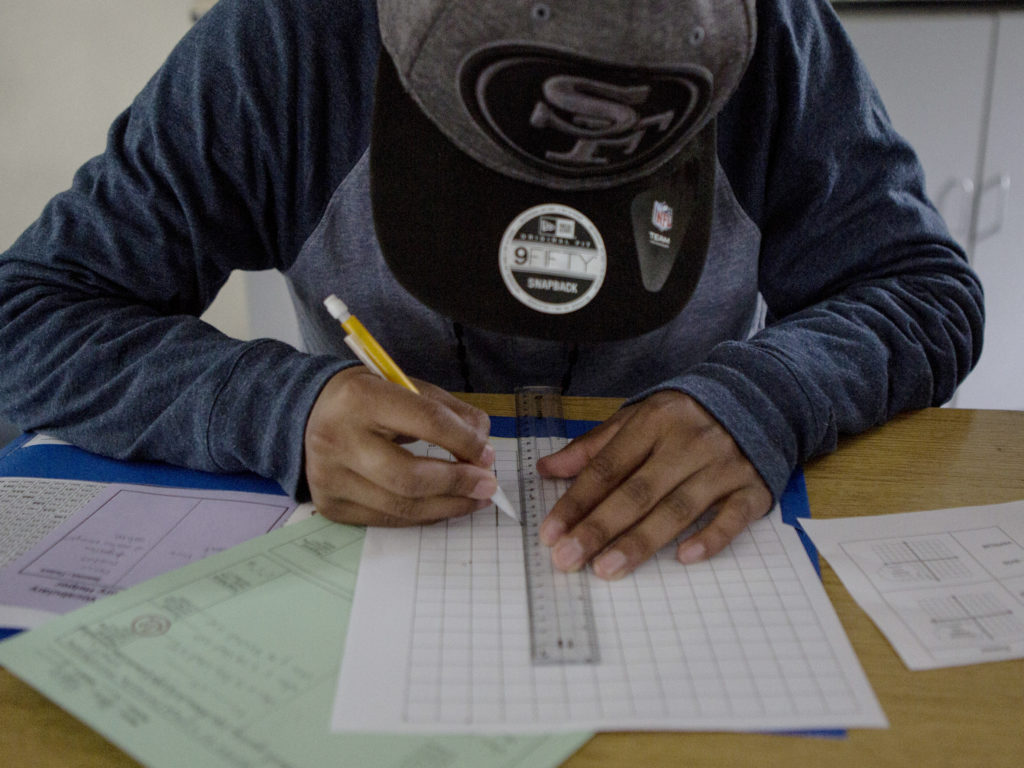
Political signs for the Placentia-Yorba Linda Unified school board are on display at an intersection in Yorba Linda.
Credit: Courtesy of Kevin Reed
Millions of California residents will not have the opportunity to vote for the people representing them on their school boards on Nov. 5 because many of the board races will not appear on the ballot.
EdSource analyzed data from 1,510 school board races in 49 California counties and found that 851 races, or 56%, will not appear on a ballot because either no one is running for the seat or a single candidate is running unopposed – making that person an instant winner.
The problem is most prevalent in more remote areas of the state, where the lack of school board members has been an ongoing issue, said Troy Flint, chief information officer for the California School Boards Association.
Districts in rural counties have smaller populations, limiting the pool of candidates for school board, and offer fewer incentives — such as monthly stipends or health insurance — than larger districts, said Yuri Calderon, executive director of the Small School Districts’ Association.
In Siskiyou County, 14 school districts do not have candidates running for their open board seats, and in San Benito County, there are 20 candidates for 31 open school board seats, leaving 13 seats without candidates. Only one race, for Trustee Area 4 in the Hollister School District, is on the ballot. It has three candidates.
In Nevada County, four of the nine districts have no candidates for their open board seats. In Plumas County, there are no school board races on the Nov. 5 ballot, although there are a total of six open seats in two districts, according to the county elections department.
School board members are responsible for setting the vision for the district, hiring its superintendent, adopting policies and curriculum, passing a balanced district budget, overseeing facilities, providing direction for and accepting collective bargaining agreements, monitoring student achievement and making program changes as needed, according to the California School Boards Association.
Calderon recalls having to convince community members to run for school board when he was the chief business officer at Cold Spring School District, which serves 193 K-6 students in Santa Barbara County.
There is less incentive for rural residents to run for school board because they are usually more satisfied with their schools and less likely to think of a school board seat as a springboard to higher political office, like candidates in more populated areas of the state might, Calderon said.
The absence of school board candidates on the ballot suggests an erosion of what many regard as a pillar of American democracy in places where there is reluctance or unwillingness to run for board positions.
Cities, suburbs also have a shortage of candidates
“One of the dynamics that’s been playing out has been people reluctant to hold onto their seats, and then people are reluctant to run for office because there’s a lot of hostility out there, and sometimes threatening behavior that are prompting either existing school board members or potential school board members to rethink whether or not they want to hold this office,” said John Rogers, director of the Institute for Democracy, Education and Access at UCLA.
The shortage of willing school board candidates is also impacting urban and suburban areas, according to the EdSource analysis. In Los Angeles County, for example, 252 candidates are running for 174 seats, meaning 90 seats have only one candidate and will not be on the ballot. The same goes for Sacramento County, where there are only 54 candidates running for 31 seats and San Diego County where 169 candidates are vying for 100 seats.
Calderon and Siskiyou County Superintendent of Schools Allan Carver agree that potential candidates are sometimes wary about running for a board seat because of the political divisiveness that has been playing out at school board meetings.
“It’s kind of one of those thankless jobs,” Calderon said. “And there has been a lot in the media about controversial issues and people becoming very, more so than just polarized, kind of aggressive with their positions. And I think that people shy away from wanting to get involved in that.”
Some rural district seldom hold elections
The lack of candidates is so common in some rural districts, school boards routinely fill empty seats by appointing people – often the incumbents – after the filing deadline ends. Some districts rarely have elections.
“It’s very typical,” said Krystal Lomanto, San Benito County superintendent of schools. “We have seven rural districts and many of those districts do not have board members that actually run for seats – they end up appointing them. So, it is a consistent practice, at least in our community. We don’t often have – in our rural school districts – board members that run against each other, so it happens quite often.”
San Benito County, a rural county in the Central Coast region, has some of the smallest school districts in the state – 15 districts with a total enrollment of 11,969 students.
In Siskiyou County, the northernmost county in the state, there are 30 candidates running for 67 school board seats in 25 districts. Fourteen school districts have no candidates for any of their open board seats and six districts have 11 seats with candidates running unopposed.
Carver expects the number of vacancies to dwindle by January when many of the open seats will be claimed by incumbents who did not file candidacy paperwork, but will continue to hold their seats by appointment.
“A lot of these vacancies, they’d hardly even consider them vacant because I bet more than half of those — probably 20 of the 37 — the (incumbent) board members are like, ‘No, I’m happy to serve. I just didn’t get my paperwork in, so just appoint me,’” Carver said.
Finding candidates for board seats in extremely small districts can be difficult. The result is often multiple family members sitting on one board. Delphic Elementary School District in Siskiyou County is governed by a board made up of a mother, father and their adult daughter, Carver said. The single school serves 65 students, many from outside the district — limiting the number of parents eligible to run for school board, he said.
“This family happens to own property that borders the school and their driveway goes right by the school,” Carver said. “Their kids went to school there, and they’ve had a long history of supporting it. So, talk about local control.”
Stipends, insurance could attract candidates
Carver is doing what he can to make being a member of the Siskiyou County Board of Education more attractive. He recently convinced the board to raise the monthly stipend from $40 to $100 so that he could attract more candidates. He said the board, like many other rural school boards, was reluctant to increase their own pay. The board also receives health insurance.
Most school districts in Siskiyou County can’t afford to pay their board a stipend to cover expenses or to offer them insurance, Carver said.
What happens if no one runs for a seat?
If no one runs for a board seat, school boards can either appoint a trustee or hold a special election. Most boards opt to appoint a trustee to avoid costly special elections.
Santa Cruz City Schools Superintendent Kris Munro sent a letter to families last month asking parents to consider applying for a seat on the board that does not have a candidate in the upcoming election. District officials also sent news releases about the available seat, advertised it in video updates and on the district’s social media accounts, and placed a legal notice in a local newspaper, said Sam Rolens, district spokesperson.
The district, which serves 4,000 students in kindergarten through 12th grade, along the state’s Central Coast, has three open seats. The two other seats that are available have one only candidate each, meaning they also will not be on the ballot.
Applicants for the open Santa Cruz seat without a candidate had until Oct. 18 to file their applications. Three days before the deadline, two people had applied, Rolens said. The district offers its trustees a $50 monthly stipend, according to Santa Cruz Local.
Santa Cruz County has even fewer residents interested in running for school boards this year than in the previous election, according to Santa Cruz Local. Three-quarters of the open board seats in Santa Cruz County, including those in Santa Cruz City Schools, will not be on the ballot on Nov. 5, according to the news site.
Boards must have quorum to conduct business
Having a full board is imperative for conducting the school district’s business. In order to vote on agenda items, a school board must have the majority of its board in attendance. Five-member boards, for example, must have at least three, and seven-member boards must have at least four members present to take action on an agenda item.
If the school district cannot fill enough board seats to have a quorum, the county Office of Education can send one of its board members to act as a substitute until the district can make an appointment.
Having a member of the Board of Education sit on school boards isn’t common, but it has happened a few times in Siskiyou County, Carver said. In one case, a county Board of Education member became a temporary board member at a tiny district serving 25 students after it lost two members of its three-person board. In another case, a board member sat on a district board for three months until they found a willing appointee, Carver said.
Despite the dire shortage of school board candidates, Carver says he tries to encourage people who will be willing to learn and consider all sides of an issue to run for office.
“You know, we always want to encourage people who have the right faculties and demeanor, and seek to truly govern for all and don’t have just one specific issue they’re concerned about,” Carver said.


